
This article was updated on January 15th, 2024
Most owners notice quickly when their dog is losing hair or is constantly itching. They are vigilant, checking their dogs for fleas, ticks, or other apparent causes. Many of us forget mites – microscopic parasites (under 1mm in length) that can affect your dog’s skin and cause:
- intense itching,
- discomfort,
- crusty and scaly skin, and
- hair loss.
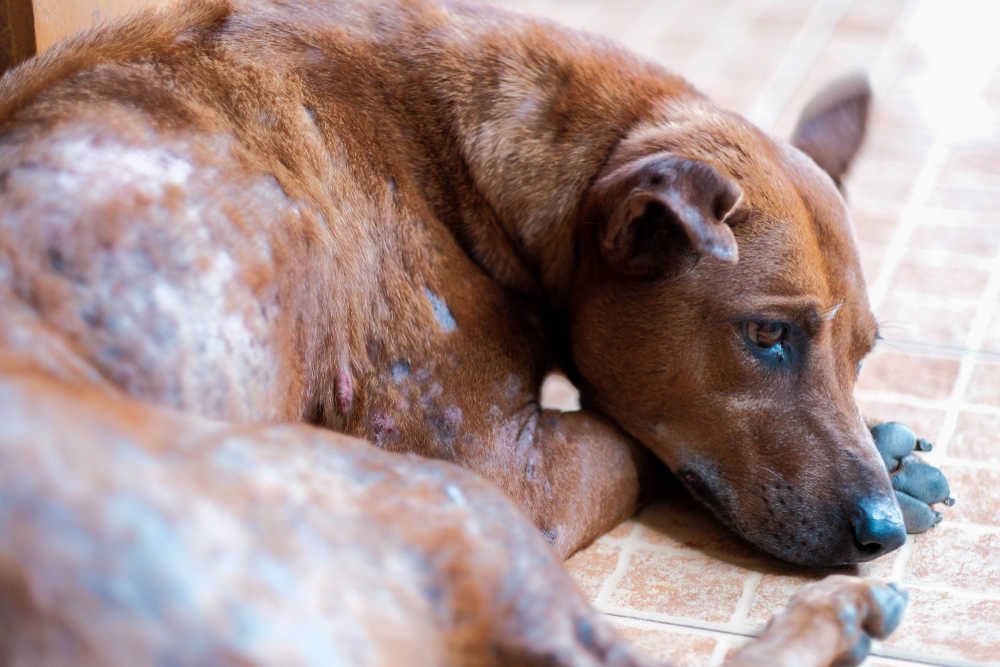
Two Main Types of Dog Mites
Sarcoptes and Demodex mites: two main types of mites affect dogs and cause the condition called mange – Sarcoptes and Demodex mites. There are also Otodectes, or ear mites, as well as Cheyletiellosis, or walking dandruff. Some mites cause constant scratching and discomfort, while others may just cause hair loss and scaly skin.
1. Sarcoptic Mange (Sarcoptes scabiei mite)
Sarcoptic mange, caused by the “Sarcoptes scabiei” mite, is often referred to as dog scabies. These mites are not visible to the naked eye but will still cause intense itchiness, mainly as the mite burrows through the dog’s skin.
Sarcoptic mange typically affects areas with thinner hair – the elbows, abdomen, and ears are the most common sites, as shown in the pictures below. The infection can also spread to the rest of the body. The skin often appears red, scaly, and crusty.
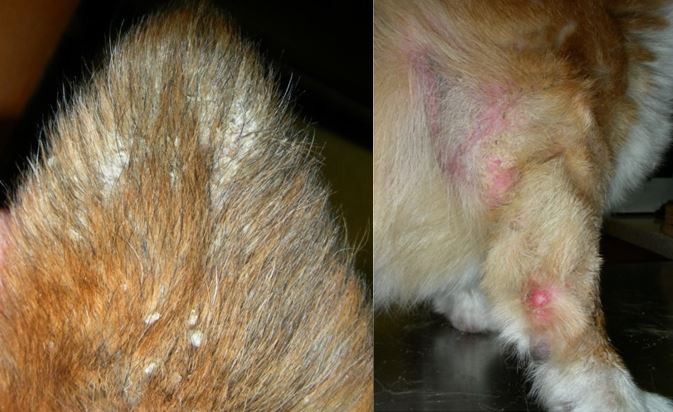
Photo: © Ian Brett Spiegel VMD, MHS, DACVD
The mite is also thought to cause an allergic reaction response in the dog that contributes to the constant scratching.

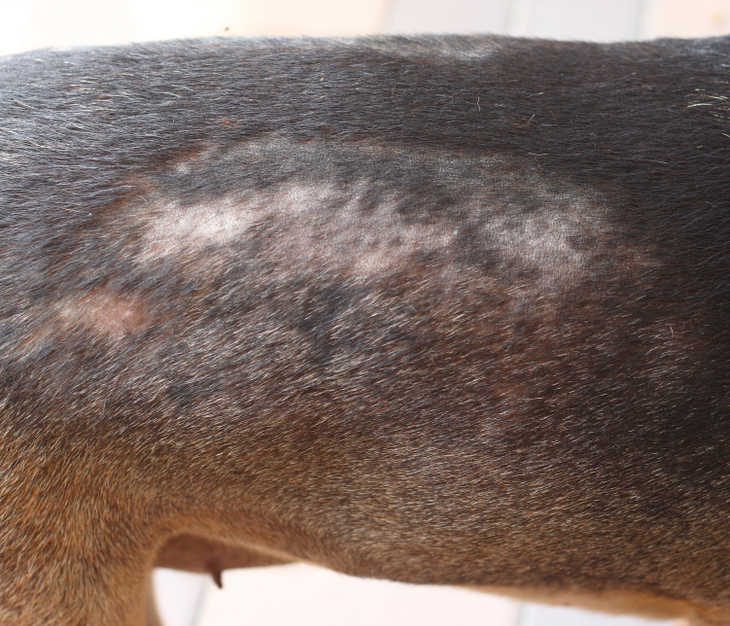
Sarcoptic mange is zoonotic, meaning it can infect humans. It is highly contagious to humans and other pets, so if your dog has been diagnosed with these mites, you should see your doctor if you or anyone in your family has a rash or itchy skin.
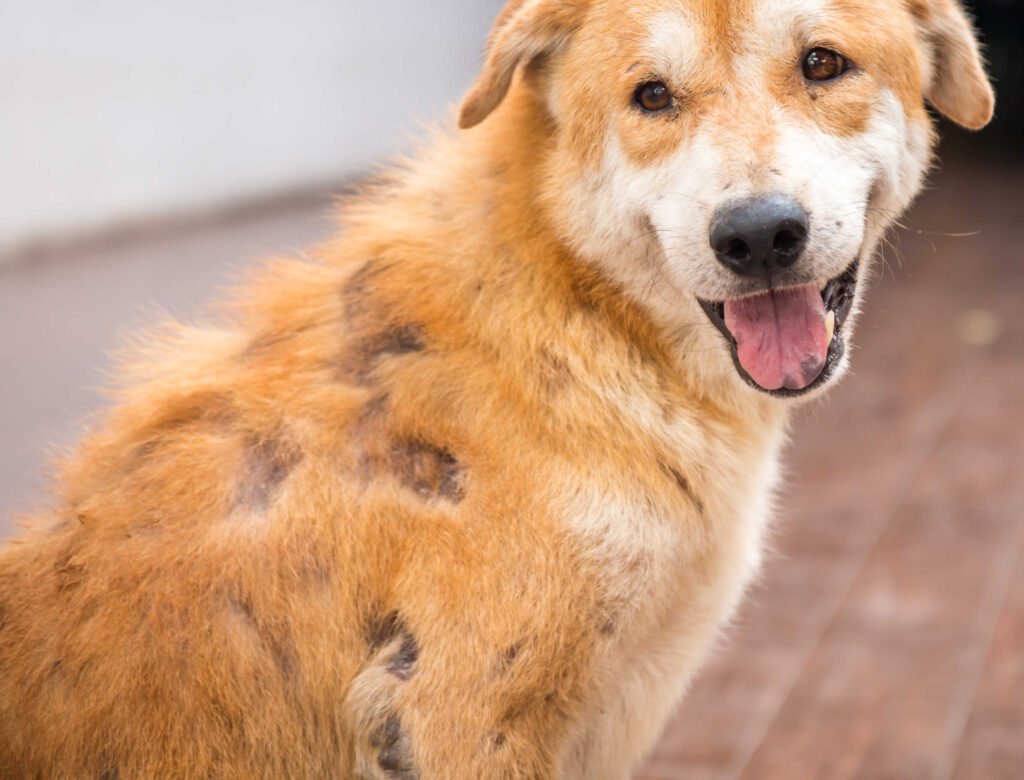
Related post: Learn more about sarcoptic mange:
View 12 pictures of sarcoptic mange (scabies)
2. Demodectic Mange
Demodectic mange is caused by tiny cigar-shaped Demodex mites that live inside the hair follicles. Most dogs will have some Demodex mites on their skin – passed from their mother at birth – but they never cause a problem for most. In fact, 90% of puppy cases resolve without treatment within 1-3 months. However, young dogs and the immunocompromised may develop skin issues from these mites.
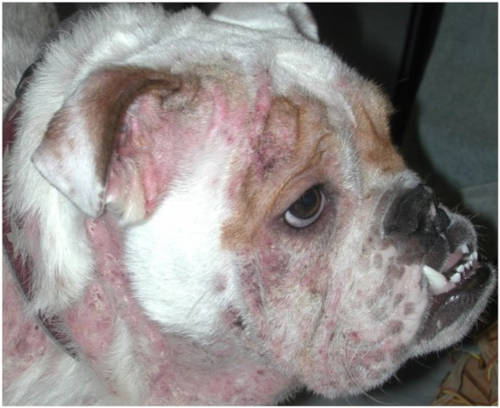
Picture: © Ian Brett Spiegel VMD, MHS, DACVD
Demodectic mange appears as hair loss and scaly patches, usually on the face and around the eyes.

Dogs may develop areas of generalized patchiness on the body and thickened skin.

Interestingly, dogs with demodectic mange may not be overly itchy. Owners may only realize something is wrong because the dog is losing hair in patches, as seen on the picture below.
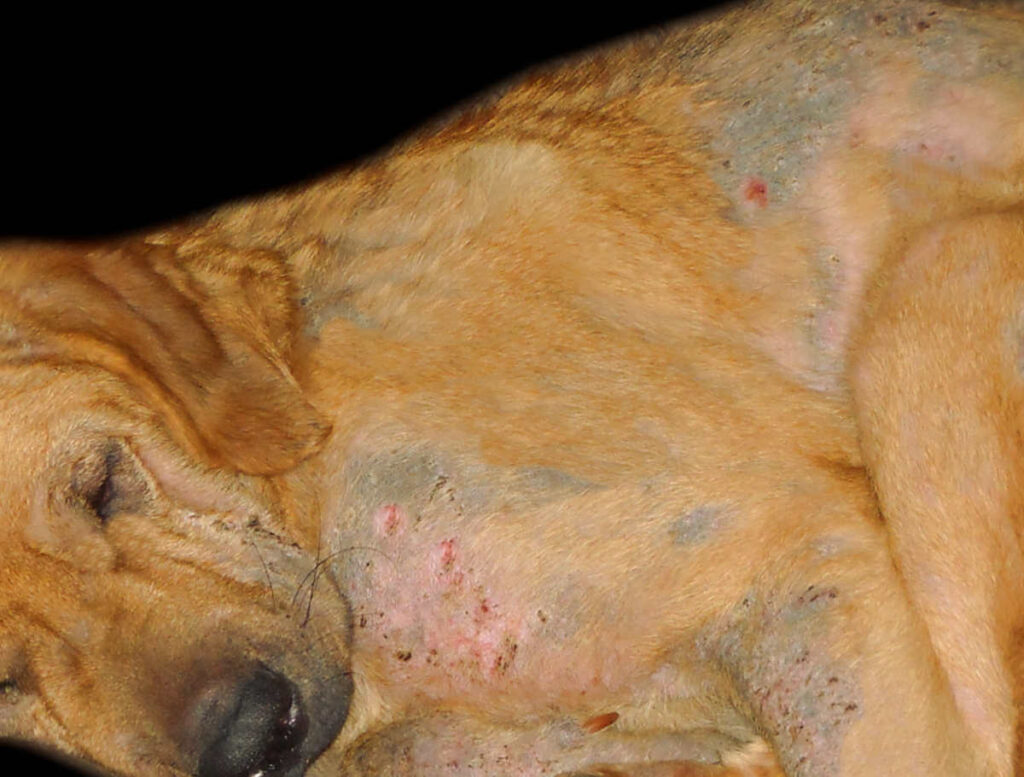
This type of mange is NOT transferable to cats or humans.
What Do Dog Mites Look Like?
Mites are microscopic parasites, less than 1mm in length, that affect your dog’s skin and can cause intense itching, discomfort, as well as crusty skin and hair loss.
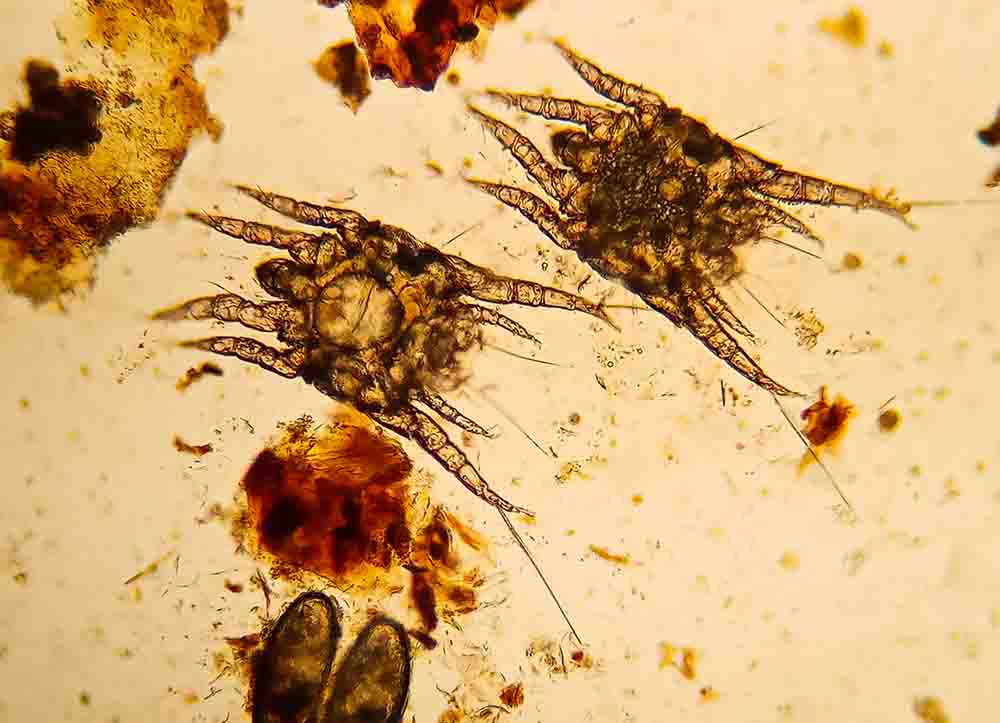
Below are helpful illustrations showing demodectic mange or red mange with demodex living in the hair follicles:
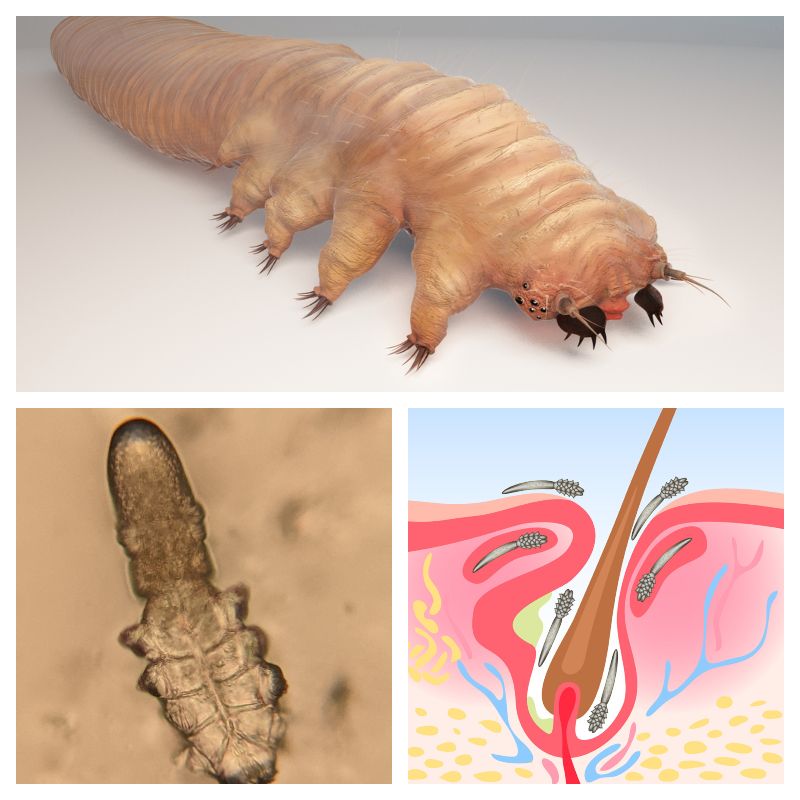
But What About Those Other Dog Mites?
3. Otodectes
Otodectes is the ear mite – more commonly seen in cats but it can still affect dogs. We don’t often see these mites either unless under a microscope; they are often hidden amongst the thick brown wax in the ears.
Otodectes can also be confused for an ear infection since they cause intense itchiness, discharge, and redness in the ears. To complicate matters, dogs infected with Otodectes can have bacterial or yeast ear infections at the same time.
A thick brown discharge and redness can be symptoms of ear mites or ear infections from yeast or bacteria:
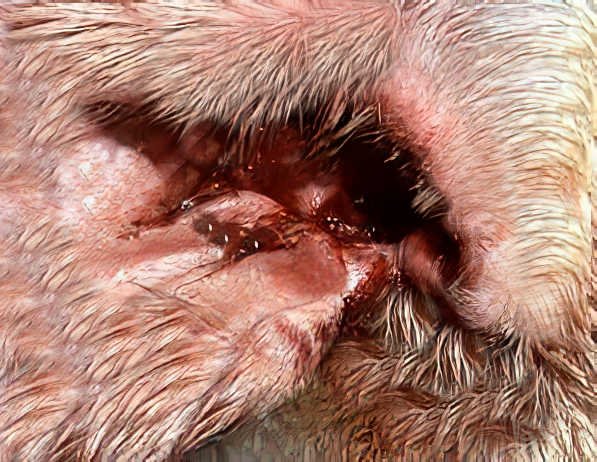
These mites are infectious and can pass to other dogs and cats. It is extremely unlike that dogs would pass these mites to their owners however.
4. Cheyletiella
Cheyeltiella mites are often known as “walking dandruff” due to the thick white scale formation seen commonly along the dog’s back. Dogs with “walking dandruff” may also have itchy, scaly, red skin.
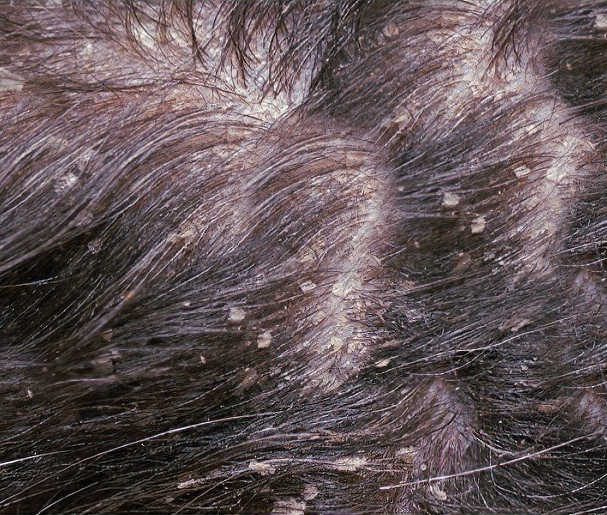
These mites are relatively rare, especially in areas where many people treat fleas and ticks, since those medications also kill these mites.
Signs Your Dog May Have Mites
Your dog’s symptoms will depend on the type of mite causing the problem.
Symptoms may include:
- Hair loss, often irregular patches
- Around the eyes and face or in areas of thin hair (elbows, belly, back legs, ears)
- Excessive itching, scratching
- Flaking or dandruff
- Red, flaky skin
- Yellow crusts
- Dark brown discharge in the ears (with ear mites), odor
Is It Mites or Is It Something Else?
While fleas are an obvious diagnosis, mites can be a bit trickier since we rarely see them with the naked eye. They cause symptoms similar to other diseases, making diagnosis tricky sometimes.
Dogs infected with mites may have similar symptoms to dogs with environmental or food allergies. These dogs often have extremely itchy, red skin that is more prone to bacterial and yeast infections.
Dogs with food allergies tend to be itchy but may also lick their paws excessively – a characteristic often not seen with mites.

If your dog has been itching his ears constantly or has dark brown “coffee ground” discharge in his ears, remember this can be a sign of a bacterial or yeast infection, as well as mites.

Steps You Can Take At Home
- Make a vet appointment (and a human appointment if needed!) – If any other animals or humans in the home are also itchy, it is best to make an appointment with your vet and your own doctor as the condition may be contagious.
- Wash bedding – Since sarcoptic mange is zoonotic and affects humans, it is best to wash your dog’s bedding, toys, collar, and anything else cloth.
- Monitor for secondary infections – Pus, moist skin, and wound discharge can all indicate an infection requiring veterinary attention. If your dog tolerates it, you can bathe them with a mild oatmeal-based shampoo and cool water to give the skin some temporary relief.
When To See Your Veterinarian
If you notice your dog’s itching or hair loss is getting worse, it’s time to call your vet. Various conditions cause skin disease, but they are all worth investigating, especially if your dog is uncomfortable, irritable, or anxious:
1. Hair Loss
Hair loss is not always caused by something infectious. Certain conditions, like thyroid disease, for example, can also affect hair growth. But if the hair loss is accompanied by extreme itch, you should make an appointment.
2. Excessive Itching
If your pup is itching to the point of irritability, discomfort, or is lethargic, you should see the vet. Constant itching also causes minute cuts in the skin, making your dog more susceptible to infection. Remember, excessive itching can also be due to environmental or food allergies and other parasites like fleas.
3. Pus, Discharge, Crusts, Scales
Moisture or discharge from the skin can indicate infection. You may also notice your dog’s skin thickening if left untreated long-term.
Treatments, Costs, and Prognosis
Diagnosing mites is usually done with a skin scrape and microscope evaluation. Even with skin scrape tests, mites can still be difficult to diagnose since they aren’t always present in the sample.
What is a skin scrape and does it hurt? Your vet will take a small blade and scrape the very top layer of the skin – this is where the mites are living, either in the hair follicles or burrowed in the skin. It may be mildly uncomfortable but shouldn’t cause lasting pain for your dog, although you may initially see some mild bleeding from the area.
The good news is if your dog is diagnosed with mites, there is a good range of treatment options from topical applications, shampoos, and oral medications. Many flea and tick medications can kill certain types of mites as well. Since the life cycle of some mites is 21 days, you will likely see a resolution within 2-4 weeks of starting treatment.
Depending on the type of mite your dog has, you may need to treat all animals in the home simultaneously.
It is also relatively inexpensive to treat mites. Costs may include:
- Office visit
- Diagnostic tests like skin scrape
- Treatment – this will vary depending on treatment choice
- Repeat diagnostics every 2-4 weeks to confirm no mites present after treatment
How To Prevent Mites in the Future
Unfortunately preventing mites is not always possible. The best prevention is not taking your dog around infected dogs or cats; this isn’t always easy though since the mites are not visible to the naked eye.
You are your dog’s best advocate and know him best. If you are concerned about his skin, itchiness, or any other symptom, take him to your vet when you notice symptoms.
Related posts about scabies:
Related posts about mange:
Disclaimer: This website's content is not a substitute for veterinary care. Always consult with your veterinarian for healthcare decisions. Read More.



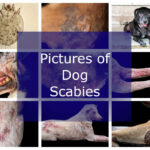
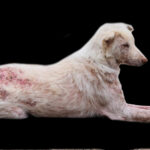
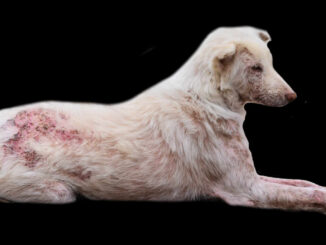
Be the first to comment